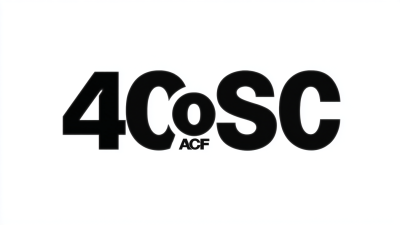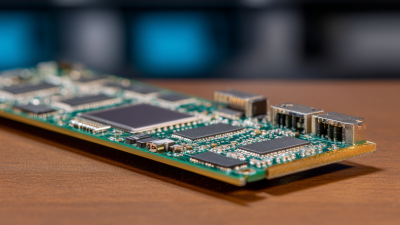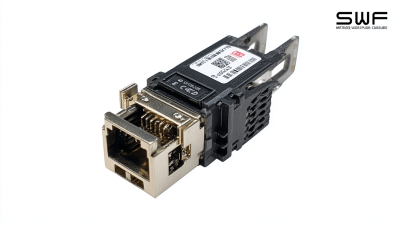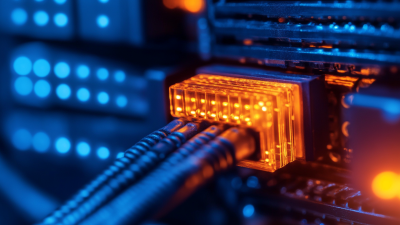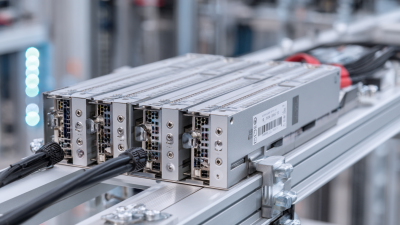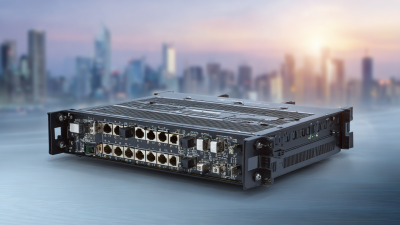Leave Your Message
In the rapidly evolving landscape of data centers, the demand for high-speed connectivity and efficient data transmission continues to drive innovations in cabling technology. The introduction of the 56G QSFP+ Active Optical Cable is poised to revolutionize data center operations, offering substantial improvements over traditional copper wiring. According to recent industry reports, data traffic is projected to grow at a compound annual growth rate (CAGR) of 30% through 2026, necessitating advanced solutions that can accommodate higher bandwidth demands and lower latency. The 56G QSFP+ Active Optical Cable not only meets these requirements with its remarkable data rates but also enhances energy efficiency, thereby supporting sustainability initiatives within data centers. With the increasing importance of scalable infrastructure, it is clear that adopting this cutting-edge technology will be essential for organizations aiming to stay competitive in a fast-paced digital economy.

In the ever-evolving landscape of data centers, the adoption of 56G QSFP Active Optical Cables (AOCs) has emerged as a game-changer. These cables provide a significant boost in bandwidth capacity, allowing data centers to handle the increasing demands for high-speed connectivity. With a transmission rate of 56 Gbps, they enable seamless data transfer between servers, storage systems, and switches, optimizing overall performance. The lightweight design and flexibility of these AOCs result in easier installation and better airflow management, which is crucial for maintaining optimal temperatures in densely packed environments.

Tips: When deploying 56G QSFP AOCs, consider the layout of your data center. Proper cable management not only enhances the aesthetic appeal but also promotes efficient cooling and minimizes potential disruptions. Additionally, ensure compatibility with existing hardware to maximize the benefits of this technology.
Another key advantage of 56G QSFP AOCs is their energy efficiency. With lower power consumption compared to traditional copper cables, these optical solutions contribute to a greener data center operation. Furthermore, AOCs are immune to electromagnetic interference, ensuring reliable signal integrity over long distances. This resilience makes them ideal for interconnects in modern architectures, where performance and reliability are paramount.
Tips: Regularly inspect and maintain your cabling infrastructure to prevent potential bottlenecks caused by wear and tear. Implementing a monitoring system can also help track performance metrics and optimize the use of 56G QSFP AOCs for your specific data center needs.
The cost-effectiveness of implementing 56G QSFP active optical cables (AOCs) in modern data center infrastructure is becoming increasingly evident. According to a report by MarketsandMarkets, the global market for active optical cables is projected to reach $2.5 billion by 2025, reflecting a compound annual growth rate (CAGR) of 25%. This growth is largely driven by the demand for higher bandwidth and lower latency networks, which are critical for supporting advanced applications such as cloud computing and AI-driven services.
Moreover, 56G AOCs are designed to reduce total cost of ownership (TCO) compared to traditional copper cabling. With an impressive range of up to 100 meters for data transmission, these cables eliminate the need for additional repeaters or amplifiers, resulting in substantial savings in both material and maintenance costs. A study by LightCounting found that data centers adopting optical cables can witness a reduction in energy consumption by 30%, as these AOCs are significantly more energy-efficient compared to their copper counterparts. This combination of low operational costs and minimal foot traffic in data center cooling requirements makes 56G QSFP AOCs a financially strategic choice for organizations looking to enhance their data infrastructure while optimizing their budget.
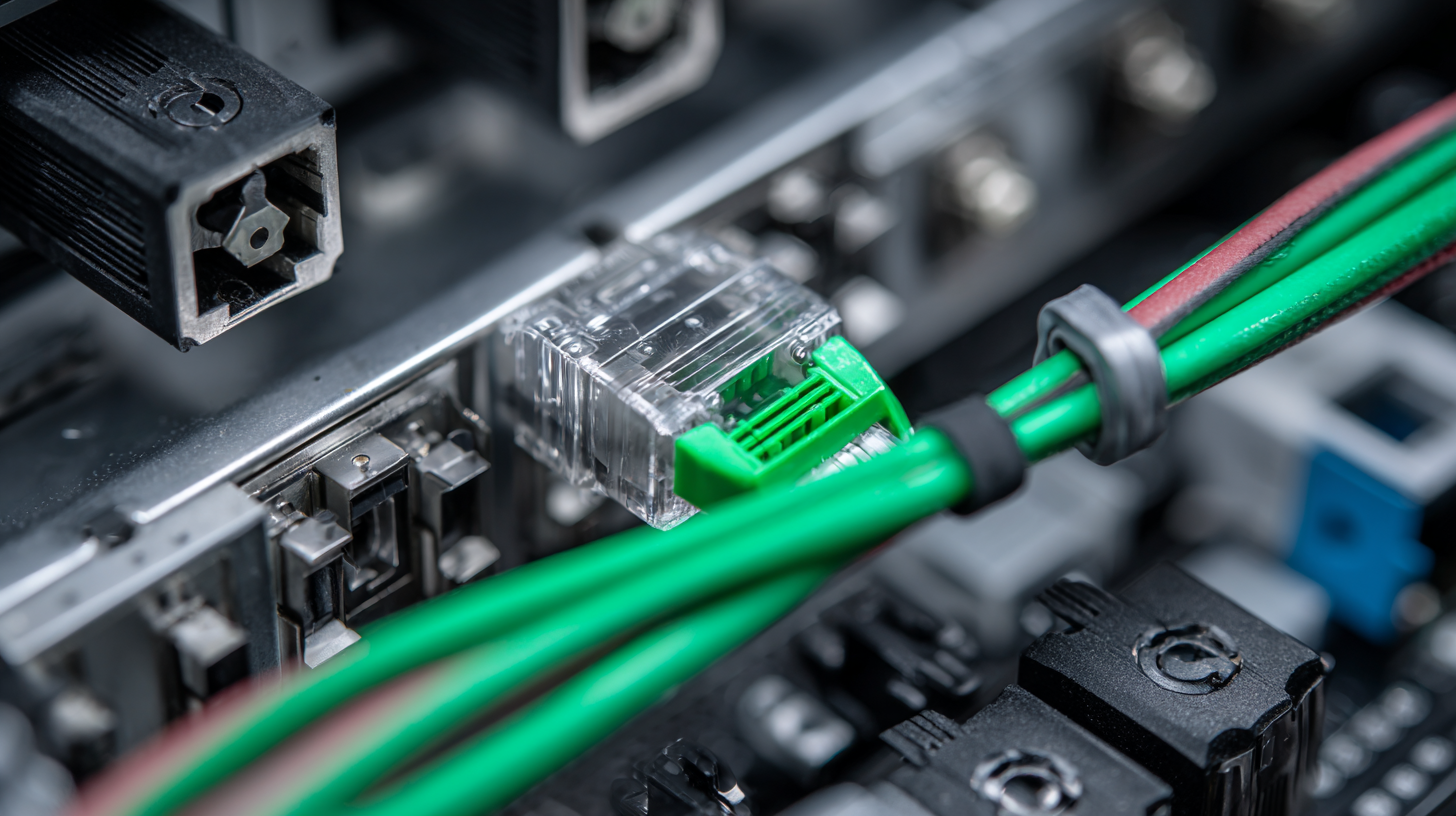
The advancement of data center technology has led to an increasing demand for high-speed connectivity solutions. One notable innovation is the 56G QSFP Active Optical Cable (AOC), which significantly reduces latency while enhancing bandwidth capabilities. These cables utilize advanced optical technologies that allow for rapid data transmission over long distances with minimal signal degradation. As a result, data centers can achieve improved performance for applications that require real-time data processing, such as cloud computing and online gaming.
Furthermore, the implementation of 56G QSFP AOCs facilitates higher bandwidth rates, supporting the growing needs of modern enterprise environments. By integrating these cables into their infrastructure, organizations can optimize their data flow and ensure smoother operations even during peak loads. The reduced latency coupled with increased bandwidth not only enhances user experience but also boosts overall system efficiency, making 56G QSFP AOCs a vital asset for any forward-thinking data center aiming to stay competitive in today’s data-driven landscape.
The growing emphasis on sustainability in modern data centers highlights the importance of environmentally friendly technologies such as 56G QSFP Active Optical Cables. These cables not only offer high-speed data transmission but also contribute to the reduction of energy consumption, aligning with global efforts to combat climate change. As reported, the market for green technology and sustainability is projected to expand from $20.9 billion in 2024 to $100.26 billion by 2032, with a compound annual growth rate of 22.4%. This demonstrates a robust commitment to integrating sustainable practices in the tech industry, particularly as data centers are significant contributors to global energy use.
The impact of climate change presents pressing challenges that necessitate action toward sustainable solutions. The consequences of rising temperatures, water shortages, and extreme weather events underscore the need for technologies that support both environmental health and economic growth. In this context, the adoption of 56G QSFP Active Optical Cables offers a dual benefit: facilitating high-speed connectivity while minimizing the environmental footprint. The alignment of such technologies with the United Nations' definition of sustainability—which calls for meeting present needs without compromising future generations—culminates in a forward-thinking approach to data infrastructure.
| Dimension | Description | Benefit | Environmental Impact |
|---|---|---|---|
| Bandwidth | Supports high data rates up to 56 Gbps | Increases data center efficiency | Reduces energy consumption per data unit |
| Distance | Effective over distances up to 100 meters | Flexibility in data center design | Less material waste due to fewer repeaters needed |
| Size | Compact and lightweight design | Saves space in data center racks | Lower carbon footprint in transportation |
| Power Consumption | Lower power draw compared to traditional cables | Cost savings on energy bills | Contributes to reduced greenhouse gas emissions |
| Durability | Enhanced resistance to physical damage | Longer lifespan reduces replacement frequency | Decreases electronic waste (e-waste) |
The compatibility and scalability of 56G QSFP Active Optical Cables (AOCs) have emerged as pivotal factors for modern data centers aiming to meet increasing data demands. Industry reports indicate that data centers are projected to handle over 175 zettabytes of data by 2025, necessitating high-bandwidth solutions. The 56G QSFP AOC facilitates this requirement by enabling seamless integration with existing network infrastructures, including switches and routers, which are compatible with both 40G and 100G technologies. This backward compatibility not only conserves capital expenditures but also ensures a smoother transition for operators looking to upgrade their systems without a complete overhaul.
Moreover, the scalability offered by 56G QSFP AOCs supports a future-proof architecture that accommodates expanding capacities. As organizations adopt advanced applications such as AI, IoT, and cloud computing, the demand for reliable and high-speed connectivity grows exponentially. According to the Global Market Insights report, the optical cable market is expected to reach over $27 billion by 2027, driven largely by the adoption of active optical cable technology. The 56G QSFP AOC is engineered for flexibility, allowing data centers to expand their networks efficiently and cost-effectively, while maintaining optimal performance levels across a variety of bandwidth-intensive applications.
This chart illustrates the key advantages of using 56G QSFP Active Optical Cables, focusing on compatibility and scalability in data center environments.
